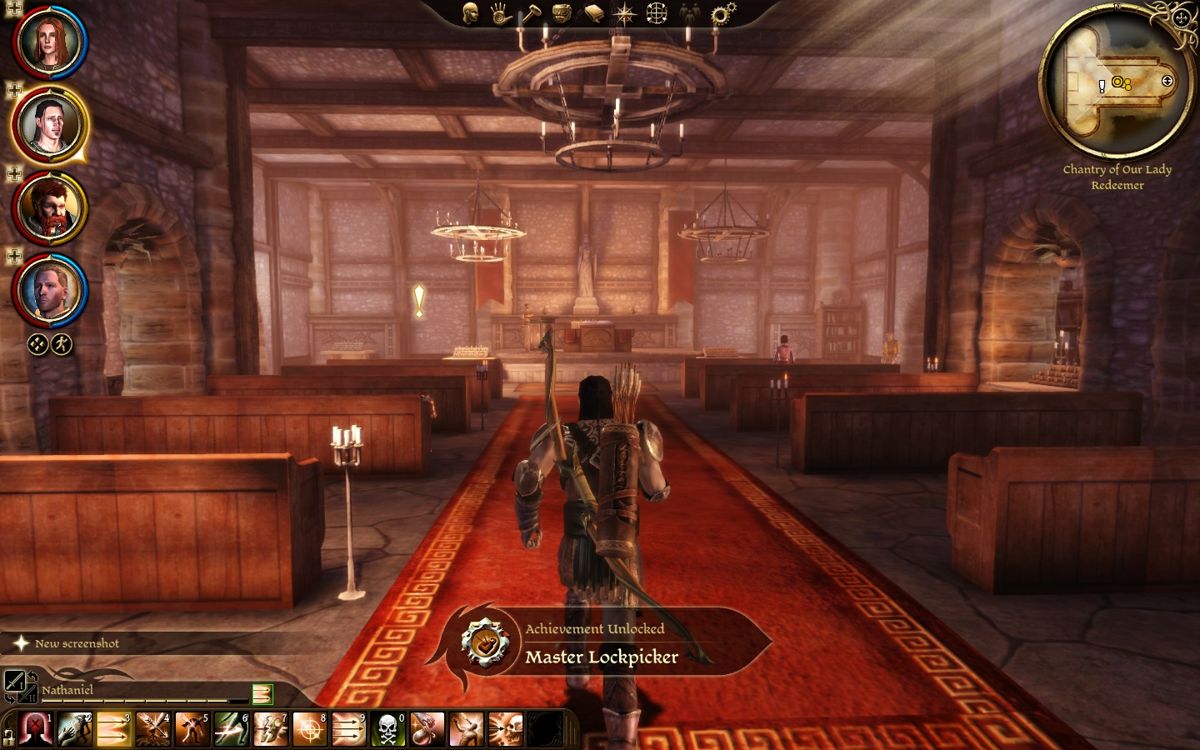Key terms
Immediacy: direct, instant experience of something, without realizing there is a medium through which it is experienced—immersion.
Hypermediacy: experience of something, with recognition of the medium through which it is being experienced.
Remediation: the representation of one medium in another.
GUI: Graphical User Interface. A modern computer screen, as opposed to old entirely text-based operating systems.
Summary

Video games incorporate multiple other media, including images, text, and video, to create immediacy around imaginary worlds. Some elements, such as the “Achievement Unlocked” notification here, draw attention to the game as a medium, creating hypermediacy. Image credit Sicarius, mobygames.com.
The “double logic of remediation” is that our culture seeks to erase media by multiplying them. That is, we seek to have so many ways of experiencing something that we forget we’re not actually there experiencing it ourselves firsthand. This goal is called immediacy. Different media seek to achieve immediacy by borrowing from one another. Media oscillate between immediacy and hypermediacy, especially new media, because the experience of immediacy calls attention to the novelty of the medium it uses. This is often made explicit as new media are marketed as improved versions of old media. The book traces the history of computers, starting out as giant machines and moving to command-line interfaces, GUIs introducing the metaphor of the desktop, and modern high-definition computer graphics, and mentions experimental computer interfaces that seek to operate without the user perceiving the presence of the interface. The authors also present the history of images, from perspective drawing to photography to computer graphics. They point out that the idea was (and is) to create an image that does not call attention to the fact that it is artificial, creating immediacy. Again, however, the realization of this immediacy brings the medium (and the artist/photographer/graphic designer) into focus, making the medium oscillate between immediacy and hypermediacy.
After a few similar examples, the authors comment on remediation, which involves recycling and building upon old media (both its techniques and its content). They argue that no medium exists in isolation; all media comment on, build upon, or replace other media. New media tends to style itself as reformation or improvement of older media, but both old and new media adapt and change one another. They also mention that remediation has a significant commercial dimension. A product markets itself as an improvement to entice customers, and a concept or franchise moves from one medium into multiple others in order to appeal to other markets.
New Media in Bolter-Grusin
Bolter and Grusin define “new media” as new relative to other, pre-existing media. While they’re discussing perspective painting versus photography, for example, photographs are considered the “new medium,” as indeed they were at the time. Their argument is that “introducing new media technology does not mean simply inventing new hardware and software, but rather fashioning (or refashioning) such a network.” So when video becomes a new medium, it isn’t just a technology that can take several photographs in rapid succession, it is also the way video is used: everything from feature films to home movies to documentaries. Television isn’t just broadcasting and receiving audio and video, it’s also a platform for advertisement, news distribution, and entertainment. Each new medium in some way incorporates older media, and older media in turn adopt from new media.
